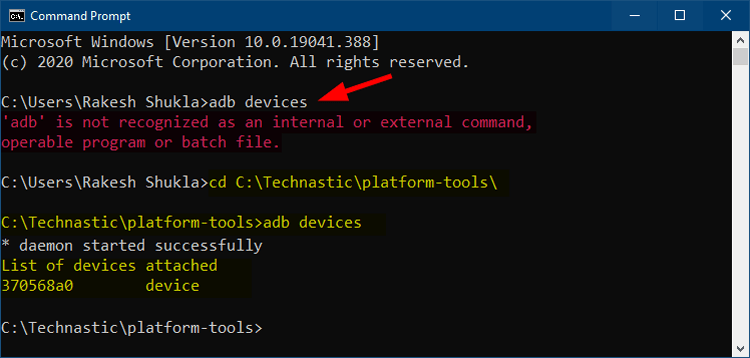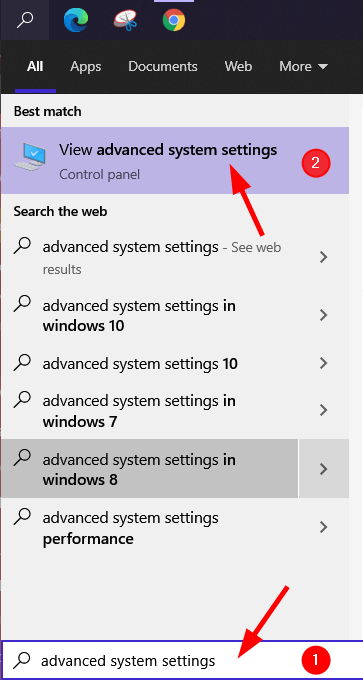Android Debug Bridge allows us to debug Android devices and modify the system from a command window. However, if you have not set up the ADB drivers on your computer properly and enabled USB debugging on your device, they can’t recognize and communicate with each other. We have shared some solutions to fix the “ADB is not recognized as an internal or external command” error on Windows 10 and 11.
Possible Reasons for ADB and Fastboot Errors
There may be various reasons you are encountering the “adb is not recognized…” error in the Command Prompt. Depending on the scenario, the error message you get may differ. Below is a screenshot of the error I recreated on my Windows 10 PC.
'adb' is not recognized as an internal or external command, operable program or batch file.
So, if you get this error in CMD or PowerShell, it could be due to one of the following reasons.
- Windows PCs don’t come with ADB and Fastboot drivers pre-installed. You must download and set up the Android SDK platform tools separately.
- You may get the “ADB command not found” error if you have an outdated version of ADB and Fastboot drivers. Installing the latest SDK platform tools on your PC might fix the problem.
- Running the ADB command from a location where ‘adb.exe’ is not present might also cause errors.
- You haven’t set the correct path under User variables or System variables while setting up system-wide ADB on your PC.
- In case you are trying to flash an OTA ZIP, a factory image, or a custom recovery, make sure you have saved the files to flash in the ‘platform-tools‘ folder.
- Ensure your Android phone is connected to the computer in file transfer mode. ADB won’t recognize the connected device in the Charging mode.
- USB Debugging is disabled on your device. Open Settings > Developer Options and turn on USB debugging.
- If you’re a Samsung user, navigate to Settings > Security and Privacy and ensure Auto Blocker is disabled.
Fixing ‘ADB is not recognized…’ Error
ADB and Fastboot commands won’t work on your Windows PC unless you open the PowerShell or Command Prompt with the path of the folder containing the files from the SDK platform tools. The fixes suggested below will solve the ADB and Fastboot errors.
Fix 1: Download the Latest SDK Platform Tools
Remove and uninstall any 3rd-party ADB client if you have it installed. Download the latest version of the Android SDK platform tools for Windows directly from Google servers.
Fix 2: Execute Commands with the Path to ADB
Since the official ADB and Fastboot drivers are not installer files, you must direct the Command Prompt to the exact path or location of the ‘platform-tools‘ directory. Now, there are 3 ways to do that.
- Open the ‘platform-tools‘ or the folder where you saved the ADB and Fastboot files. Click the folder address bar, type “powershell” or “cmd” and press Enter.
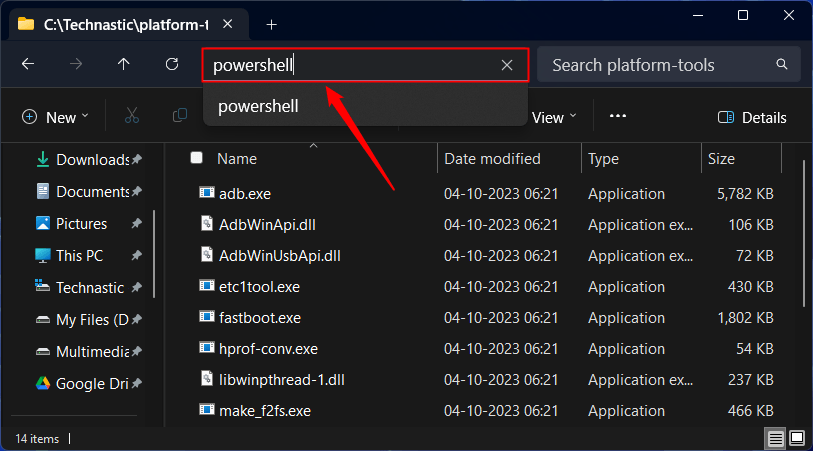
- Open the ‘platform-tools‘ folder. Click the File tab in the file explorer window and select Open Windows PowerShell.
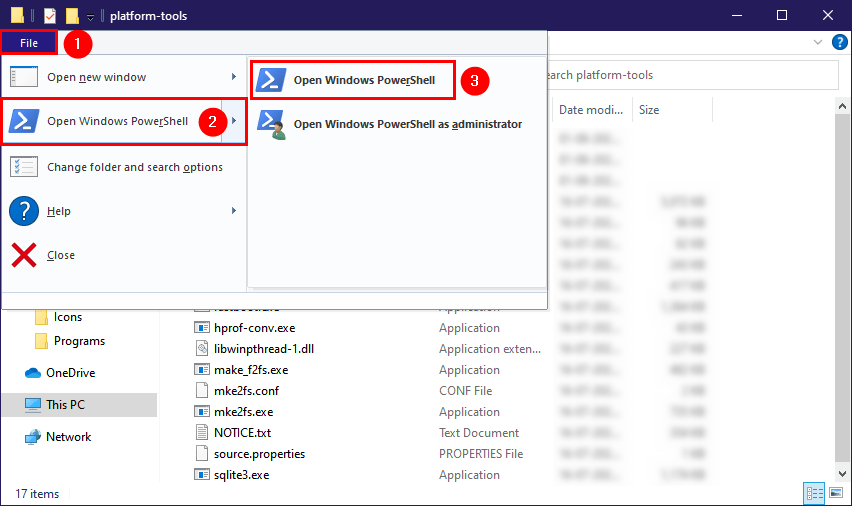
- With the ‘platform-tools‘ folder in focus, hold the Shift key and right-click at an empty area in the folder window. Select Open PowerShell window here or Open in Terminal from the context menu. You can add a permanent option to launch the command prompt to the Windows 10 context menu.

Fix 3: Use the ‘platform-tools’ Folder Path
Another way to add the path to the ‘platform-tools’ folder in the command window is by using the cd or chdir (change directory) command. This command tells PowerShell to trigger ADB or Fastboot from a given path. Just launch the command window and type cd followed by the platform-tools folder path and hit Enter.
cd c:\technastic\platform-tools
Fix 4: Add a User or System Variable Path for ADB
Although the CD method gives the expected result, it’s time-consuming as you need to type the folder path every time you use ADB. The easiest way to access ADB and Fastboot universally from any screen on your Windows PC is to set up system-wide ADB and Fastboot.
This method involves adding System or User Variables for the path of the ‘platform-tools‘ folder, and below we’ll see how to do that.
- Open Advanced System Settings on your Windows PC. You can go to those settings in 3 ways.
- Once you get to the System Properties pop-up window, click Environment Variables.

- A new pop-up window named Environment Variables will appear. Click on any item under User or System variables and click New.
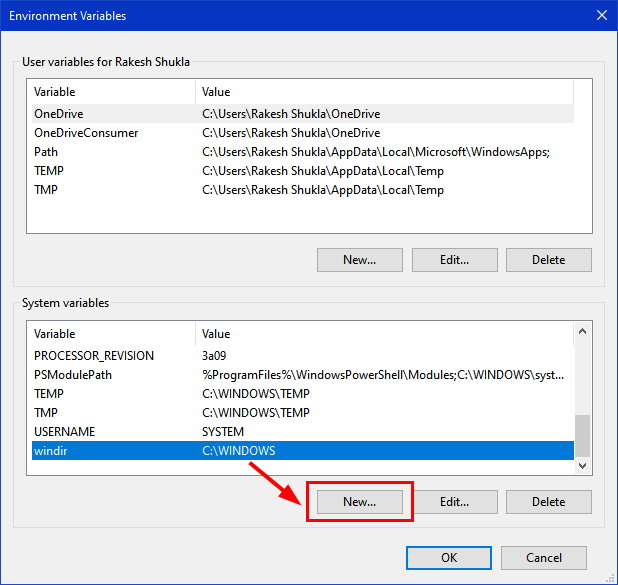
- When the New User/System Variable pop-up appears, type “Path” under the Variable name, then click on Browse Directory. Navigate to the ‘platform-tools‘ folder and click the OK button.

- Finally, click OK to add the path variable.
- Next, click OK in the Environment Variables window to save it.
Done! You have successfully set up system-wide ADB and Fastboot on your Windows PC. Now, you can execute ADB or Fastboot commands from any screen without navigating to the ‘platform-tools’ folder.
Fix ‘adb.exe: no devices/emulators found’ Error
If you are get adb.exe: no devices/emulators found error, it means that the ADB daemon is unable to detect your device. It might be due to the following reasons.
- Your Android phone or tablet is not connected to the computer.
- You haven’t turned on USB debugging.
Take care of the above things, reconnect your device, and try again. The error should have gone away.
Fix Fastboot is not Recognized Error
The fixes I suggested above to solve the ADB or ADB command not recognized error will also fix the following issue.
'fastboot' is not recognized as an internal or external command, operable program or batch file.
However, if you’re still getting the Fastboot is not recognized error, here’s how to fix it. The solution should also work if Fastboot is not detecting a connected device.
- Download the SDK platform-tools and extract the zip file.
- Open the ‘platform-tools‘ folder.
- Now, copy or move the files you want to flash to your Android device to the same folder where ‘adb.exe‘ and ‘fastboot.exe‘ files are present.
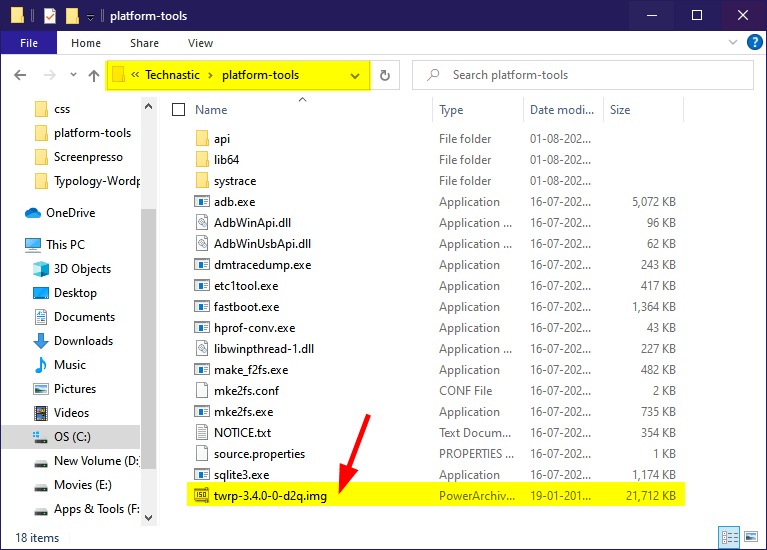
- Reboot your Android device into Fastboot Mode using the following command.
adb reboot fastboot
- While your device is in Fastboot Mode, connect it to the PC via USB.
- Then launch a command window from the ‘platform-tools‘ folder.
- It’s time now to execute the following command.
fastboot devices
- If you get the list of attached devices in the command window, it means everything is fine. However, if you encounter any of the following issues, try unplugging the USB cable and inserting it again. If it still doesn’t help, try rebooting your phone and PC and try again.
- Fastboot does not detect the device
- Fastboot devices are not showing in CMD
- Fastboot is waiting for the device
If you still get any ADB or Fastboot-related issues, ping us so we can assist you in fixing them.

